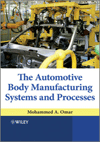X-Y-Z: Flexible Couplings Connect Rotating Shafts
Football helmets and flexible shaft couplings have much in common.
Football helmets were once made of leather. Today, they're high-tech assemblies of plastic, rubber and steel. Similarly, couplings originally consisted of two steel collars linked by leather straps. Today, they're high-tech assemblies of plastic, rubber and steel. Football helmets protect players' brains from the force of collisions. Couplings protect bearings from radial and axial loads caused by misaligned shafts.
It's impossible to align a motor shaft perfectly with a ballscrew or other shaft, says William J. Nardello, product manager with Precision Industrial Components (Middlebury, CT). The two can be misaligned from the start due to tolerance buildups, or they can go out of alignment due to bearing wear or structural deflection. Either way, flexible couplings transmit torque from one shaft to the other, while accommodating any misalignment between them.
"There are limits," adds Nardello. "The greater the misalignment of the shafts, the less speed and torque you can get out of your motor."
Shafts can be misaligned in different ways, explains Robert Jewell, president of Rocom Corp. (Huntington Beach, CA). Angular misalignment is when the centerlines of the shafts intersect to form an obtuse angle. Ideally, the angle's vertex should be at the center of the coupling. Lateral misalignment is when the centerlines of the shafts are displaced laterally, but remain parallel, never intersecting. When installed, the coupling will be bent in two equal obtuse angles. Skewed misalignment is the combination of angular and lateral misalignment. The coupling will be bent in two unequal obtuse angles. The vertices of these angles should be as nearly centered in the coupling as possible.
Besides misalignment, couplings absorb axial motion between the shafts. One or both shafts can move toward or away from each other if either shaft is unrestrained or if temperature fluctuations cause expansion and contraction.
Engineers have many options for flexible couplings, ranging from simple plastic assemblies to highly engineered components machined to narrow tolerances. Which to use depends on the torque, speed and accuracy requirements of the application; the type and degree of misalignment; the operating environment and maintenance needs; and cost.
On the low end of the cost scale are K-type couplings, which consist of two steel hubs joined by a pair of interconnected polyurethane bands at right angles to each other. Providing maximum flexibility, these couplings are ideal for environments with abrasive dust. They accommodate angular misalignment of 10 to 15 degrees and lateral misalignment of 0.094 to 0.125 inch. Their torque capacity ranges from 3 to 40 in.-lb.
Oldham couplings consist of two hubs and a floating center block made from nylon or oil-impregnated bronze. Grooves in the hubs capture corresponding ridges on the block. Oldham couplings accommodate angular misalignment of 0.5 to 1.5 degrees and lateral misalignment of 0.003 to 0.2 inch. Their torque capacity ranges from 0.1 to 22.5 newton-meters.
Higher up the cost scale are slit-type couplings. Made of stainless steel or anodized aluminum, these one-piece couplings get their flexibility from narrow slits cut into their bodies. Because of their accuracy and reliability, they are often used in gearbox and leadscrew applications. They accommodate angular misalignment of 3 to 5 degrees, lateral misalignment of 0.01 to 0.03 inch, and axial motion of 0.008 to 0.01 inch. Their torque capacity ranges from 7 to 319 in.-lb.
Bellows couplings are used in high-speed, high-accuracy servomotor applications, says Jim Barkand, technical support manager for Precision Manufacturing Group LLC (Cedar Grove, NJ). These zero-backlash couplings have high torsional rigidity, low inertia and very low elastic windup. They can be made from phosphor bronze, brass, stainless steel or electrodeposited nickel. They are very durable, with a minimum life expectancy of 10,000 to 100,000,000 cycles. They accommodate angular misalignment of 1 to 31 degrees, lateral misalignment of 0.001 to 0.076 inch, and axial motion of 0.023 to 0.24 inch. Their torque capacity ranges from 2 to 4,000 in.-oz.
Looking for a reprint of this article?
From high-res PDFs to custom plaques, order your copy today!






